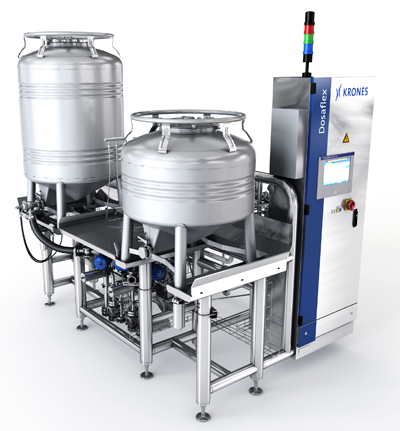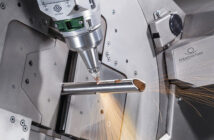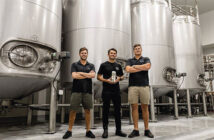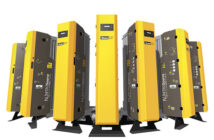
DosaFlex: a unit for aseptic dosing of fruit particles.
For the producers of fruit beverages with a solids content like pulp or fruit chunks, a new, affordable option is now available for aseptic handling of solids.
Krones has developed the DosaFlex aseptic container station for product-friendly dosing of aseptic components in finished beverages with a solids content. This has been made possible by the first-time provision of product components with an increased concentration of solids in aseptic containers – an option that used to be offered only for aromas and concentrates. The aseptic containers can if so desired be pressurised with an overlay of sterile air or nitrogen. This prevents recontamination or absorption of unwanted substances such as oxygen. For continuous operation, two container connections can be used alternately. To ensure fast container change-overs, the connections are sterilised with steam before the product path is opened.
In the single-flow process, hitherto compounds with a solids content have been non-aseptically blended before the beverage processing section and then heated up together with the fruit-juice content in a UHT (ultra-high-temperature) system. The disadvantage here is that the liquid content also has to be heated up for significantly longer than necessary, with a resultant impairment of the quality.
The newly developed DosaFlex aseptic container station, with its attractive price-performance ratio and its minimised footprint, is also particularly suitable for beverage producers who want to try out new beverages with a solids content on test markets. The container station is integrated between the units for continuous product treatment and the filler. The finished beverage is blended using controlled dosing in a double-seat valve with an adjacent vapour seal, designed to cope with aseptic processes. For low-acid products, a vapour seal is additionally provided in the condensate drain, so as to ensure a sterile production process even with sensitive products.
The rate of damage to particles that are larger than 3 x 3 x 3 millimetres is below five percent, while the dosing accuracy lies at +/-0.3 percent of the dosing quantity involved – both of these figures are significantly lower than those encountered in classical single-flow processes. The aseptic container station scores highly in terms of eco-compatibility, too – it bears the Krones enviro seal for energy- and media-efficiency.




























































































